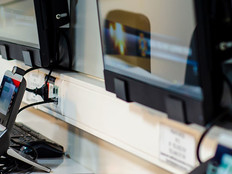Change Is Coming to Officer Safety Technology in Vehicles
Police officers across the country are often racing in squad cars to respond to emergencies and reports of crimes. However, they can’t keep the public safe if they can’t safely travel.
Outfitting police vehicles with the latest equipment could become even more critical in coming years. Fortunately for police departments, advances in technology offer the potential for significant improvements in officer safety.
Such improvements are badly needed.
According to 2016 FBI data, crashes involving motor vehicles were the top cause of accidental officer deaths in the line of duty. According to the National Law Enforcement Officers Memorial Fund, there were 55 vehicle-related officer deaths in 2016 (including motorcycle accidents), making up 31 percent of all officer fatalities that year. In 2017, there were 46 vehicle-related deaths, making up 27 percent of all officer fatalities that year. In 2018, the figure climbed to 49 deaths, making up 31 percent of officer fatalities that year. Automobile crashes make up the majority of vehicle-related deaths overall.
Given those grim statistics, it’s good news that technologies like heads-up displays in patrol cars, voice-activated commands and advanced driver assistance systems can help improve officer safety. The evolution of mobile technology also aids officers since smartphones and related software are able to replace bulky laptops, giving officers a streamlined way to view information.
MORE FROM STATETECH: Discover the operational benefits of cutting-edge public safety tech.
Sensors, AI, Heads-Up Displays and Other Tech Boost Safety
There are a variety of technologies that can help improve the safety of officers when they are in their cars. One is driver assistance and crash avoidance technology.
As The Des Moines Register reports, Curtis Pion, business manager for Iowa’s Polk County Sheriff's Office, wants to explore deploying sensors that can be placed on the outside of vehicles to alert officers of movement outside their cars.
“The sensors can trigger vehicles to automatically roll up windows and audibly warn officers,” the newspaper reports.
There are also collision avoidance systems that rely on computer vision and artificial intelligence, such as those from Mobileye. Mobileye’s technology “continuously monitors the road ahead and analyzes the risks of forward collisions, unintended lane departures, tailgating, and pedestrian and cyclist hazards,” the company says on its website. “When a threat is detected, Mobileye warns with both visual and audio alerts a few seconds before a potential collision.”
Another technology element that can enhance safety are heads-up displays, which overlay digital information into an officer’s field of view. As Officer.com reports, Panasonic is developing a new piece of software called Verify. In a recent demonstration of the technology at the International Association for Chiefs of Police 2019 conference in Chicago, Panasonic strategically placed a small screen that integrates heads-up display (HUD) technology. The system also uses a four-button controller, allowing officers to easily get access to the HUD, dispatch information, navigation and license queries. The solution can also display warnings and alerts such as recent activity and warrants.
HUDs limit the distraction of looking down and away from the road in order to get access to critical information.
Another development is voice-to-text tech, which allows officers to relay messages while they are driving without the distraction of typing into a mobile device.
MORE FROM STATETECH: Find out how 5G network slicing technology can benefit public safety.
Mobile Technology Can Limit Distractions
Last year, the Chicago Police Department began a pilot program in partnership with Samsung to give officers more resources while they are patrolling the Windy City’s streets.
The CPD is testing Samsung’s DeX in-vehicle solution, which gives officers the ability to dock their Samsung Galaxy smartphones and access policing applications on a dash-mounted display and keyboard.
Officers who use the solution will be able to access a computer-aided dispatch application and other CPD systems to conduct background checks and complete reports, according to a press release. Additionally, when officers use their smartphones to take photos and videos as evidence, they can immediately attach those media files to reports.
Such solutions give officers the ability to more easily access police applications without having to deal with large laptops.
A wide range of technology is making officers both more productive and safer while they are out protecting the public.
This article is part of StateTech's CITizen blog series. Please join the discussion on Twitter by using the #StateLocalIT hashtag.










